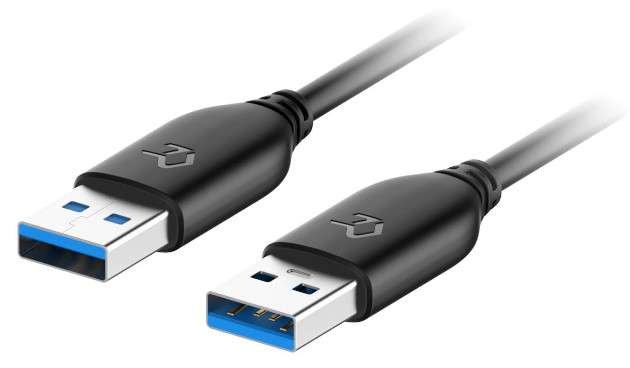When it comes to USB, everyone must be familiar or unfamiliar with it. Although we use it every day, the complicated classification makes many people unclear. So, how to accurately identify USB?
In fact, there are mainly two aspects to understanding the USB interface: transmission standard and interface standard.
The transmission standard mainly refers to the transmission rate, and the interface standard corresponds to the appearance of the interface.
The USB (Universal Serial Bus) bus protocol is based on Intel and is a serial interface standard jointly developed by seven companies including Compaq, Microsoft, IBM, DEC, Northern Telecom, and Japan’s NEC. There are main four types:
The Birth of USB—USB 1.0
The USB1.0 specification was officially proposed in 1996, but the bandwidth was only 12Mbps, about 1.5MB/s, and the speed was very slow. Moreover, there were very few peripheral devices that supported USB at the time, so it was not taken seriously. The maximum output current was 5V/ 500mA.
A Qualitative Leap—USB 2.0
USB devices have gained widespread popularity due to their advantages of portability, unified standards, and hot-swappable support.
In 2000, the new USB2.0 specification came out with the speed of 480Mbps, about 60MB/s. It is also backward compatible with the 1.1 specification and has a maximum output current of 5V/500mA.
Strong Breakthrough—USB 3.0
USB 3.0 greatly increases the theoretical speed of transmission bandwidth to 5Gbps, provides better power management, supports standby, hibernation, pause, and other states, and identifies devices faster. The maximum output current is increased to 5V/900mA.
Quick Tip—USB 3.1
The USB 3.1 pursues faster speeds, with a theoretical speed of 10Gbps, twice that of USB 3.0, and a maximum output current of 20V/5A.
Introduction to Standard USB Interface
USB Type-A
Standard Type-A is also the most common USB interface for USB mice, keyboards, and regular USB drives.
USB Type-B
The USB interfaces on computers are all Type-A interfaces, while external devices mostly use Type-B interfaces.
Typical representatives: printer, monitor USB interface data cable, USB docking station, etc.
USB Type-B Subdivision
Due to the significant increase in transmission speed of USB 3.0 and the addition of 4 lines for receiving and transmitting signals, its related pins have also changed. So there are Type-B 2.0 and Type-B 3.0.
Downwards Compatible Type-B 3.0
The USB Type-B 3.0 female port has downward compatibility and can be plugged into the Type-B standard male port.
Mini USB
Type-B has added anti-misconnection properties and evolved a new mini USB with a smaller size. It can often be seen on recording pens, card readers, MP3 players, and DSLR cameras.
Micro USB
Micro-USB is the next generation specification for Mini-USB. Micro USB standard version is also divided into Type-A and Type- B.
Micro USB has a new shape after upgrading to 3.0.
Micro USB 3.0 female port is also downward compatible with 2.0.
USB Type-C
Brand new interface, supports forward and reverse plugging with more pins, and can support up to USB 3.1.
Summary of Transmission Protocols Supported by Various USB Interface Types
| USB Interface Type | Transport Protocols Supported | |||
| USB 1.0 | USB 2.0 | USB3.0 | USB3.1 | |
| USB Type-A | √ | √ | √ | √ |
| USB Type-B Standard | √ | √ | ||
| USB Type-B 3.0 | √ | √ | √ | √ |
| Mini USB-A | √ | √ | √ | |
| Mini USB-B | √ | √ | √ | |
| Micro USB-A Standard | √ | √ | ||
| Micro USB-B Standard | √ | √ | ||
| Micro USB-A 3.0 | √ | √ | √ | |
| Micro USB-B 3.0 | √ | √ | √ | |
| USB Type-C | √ | √ | √ | √ |
Given the USB can be even more flat and smaller in comparison with other outer interfaces, more and more project requirements on using the USB, especially type-C, to integrate the data input and power for the display.
Any questions about the USB interface, contact us to get a connection with our technology team for further discussion and information.
There are other common display interfaces you may have interest
6 Most Common Types of Display Interfaces: MCU, SPI, RGB, MIPI, LVDS, eDP
HDMI interface








